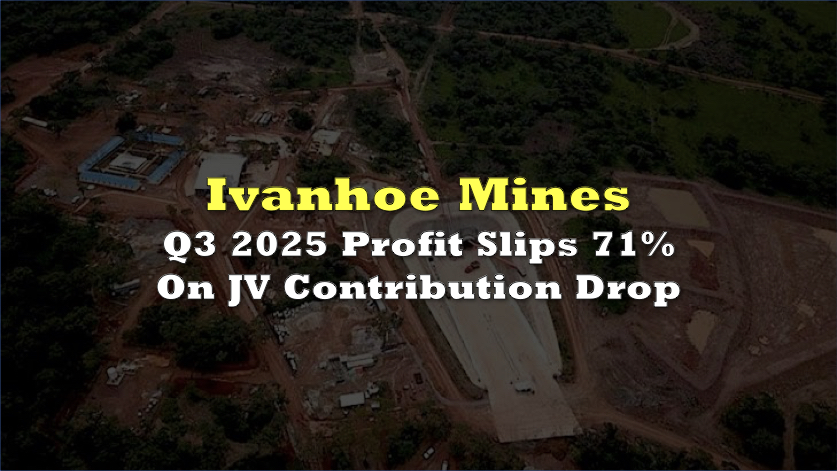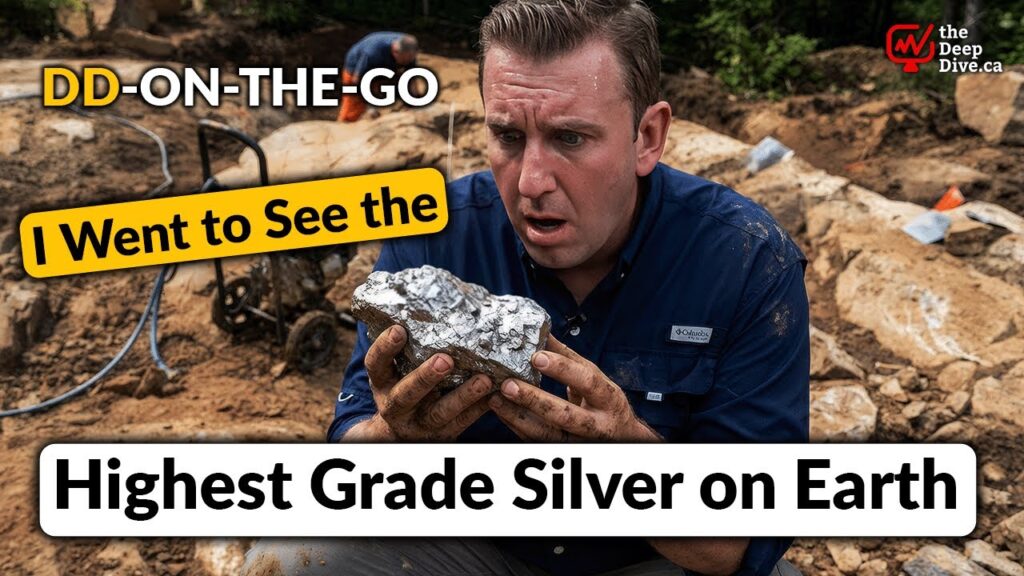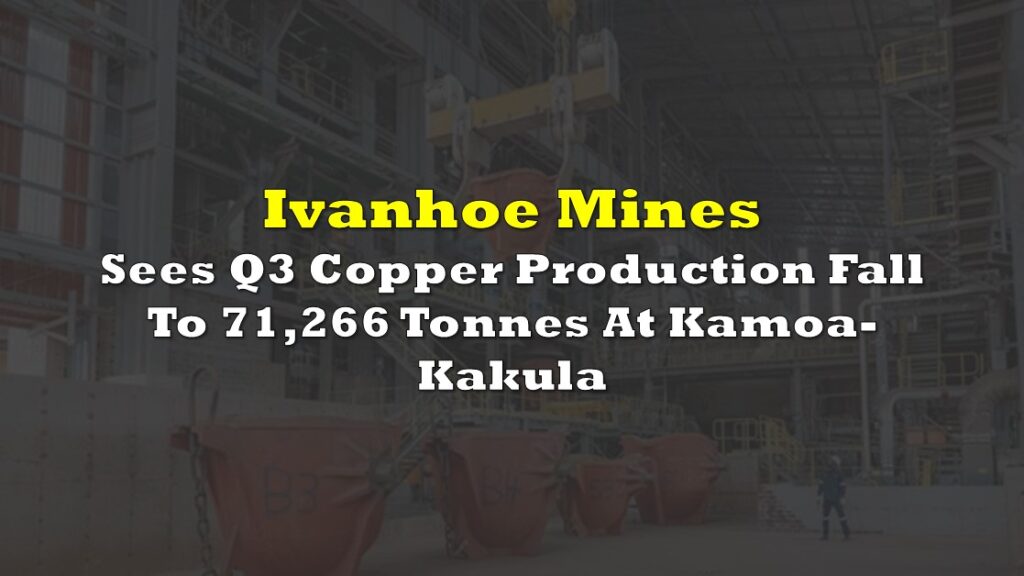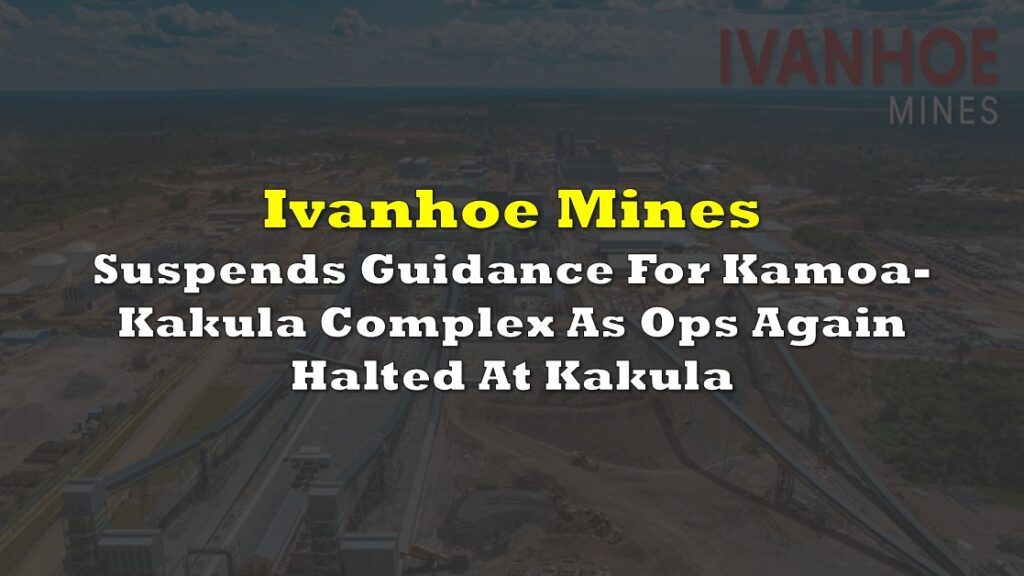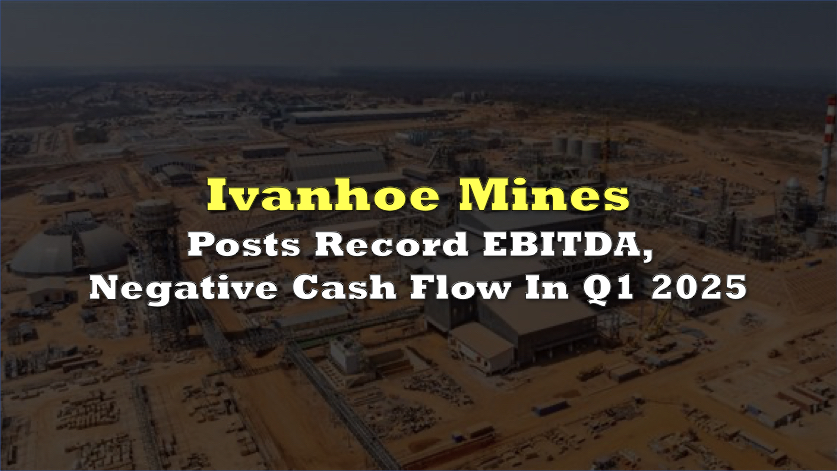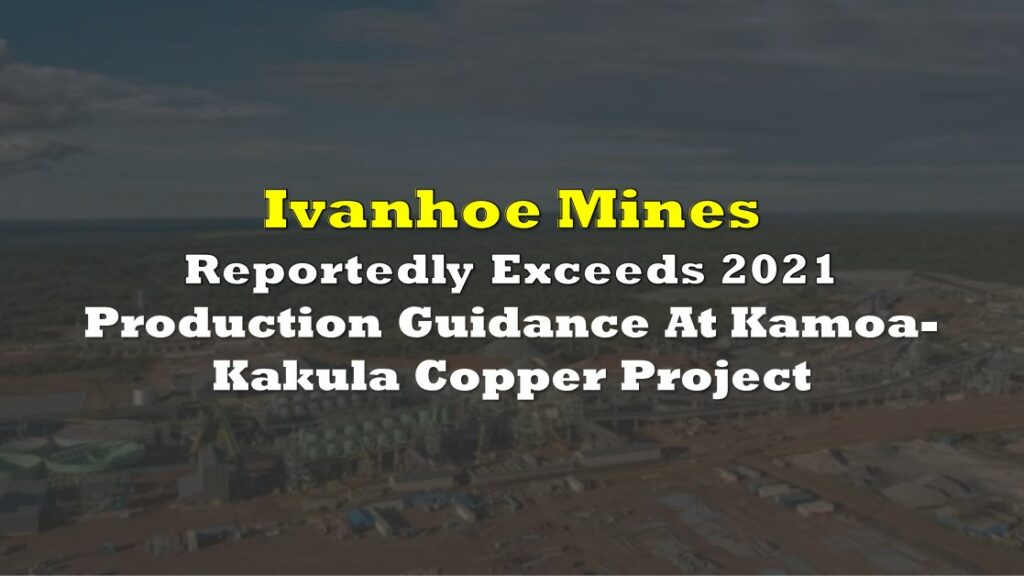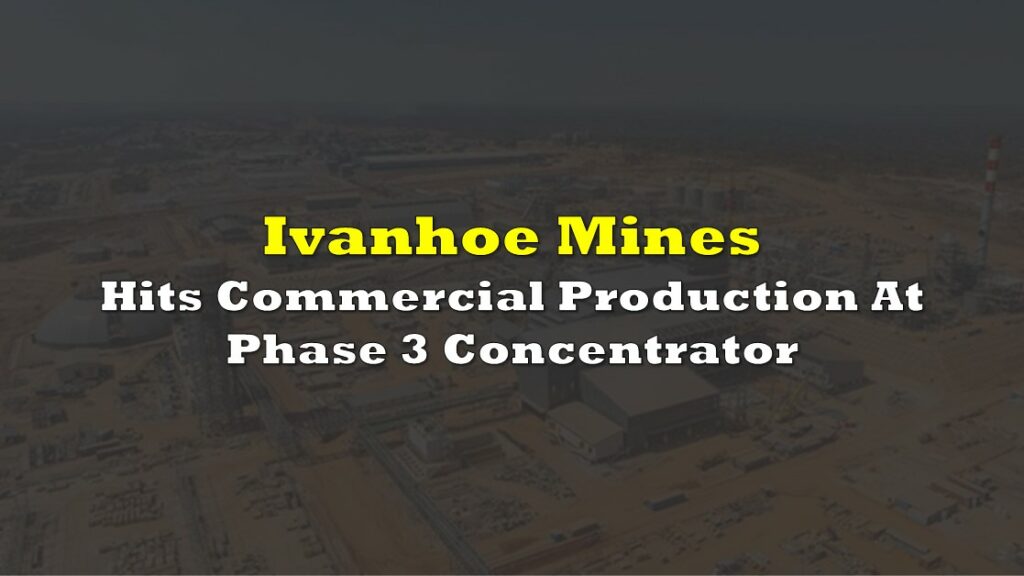Ivanhoe Mines (TSX: IVN) reported profit of $31 million for the third quarter of 2025, down from $108 million in the same period in 2024, as weaker contributions from the Kamoa-Kakula joint venture and higher costs more than offset new revenue from Kipushi and strong financing inflows.
Revenue rose to $129.4 million in Q3 2025 from $96.8 million in Q2 2025, driven mainly by a full quarter of commercial production and sales from the Kipushi zinc mine. Cost of sales climbed to $122.2 million from $100.2 million in the prior quarter, which left only about $7.3 million of gross profit.
Share of profit from joint venture dropped to $11.3 million in Q3 2025 from $83.5 million in Q3 2024. Finance income stayed broadly stable at $43.9 million versus $43.6 million in Q2 2025, but was below the $60.2 million earned in Q3 2024. General administrative expenditure was sharply lower at $2.1 million, compared with $10.6 million in Q3 2024. Finance costs also increased to $20.9 million from just $0.5 million, reflecting higher borrowings and funding costs. Share-based payments were $6.2 million, lower than $7.5 million booked in Q3 2024.
Diluted earnings per share were both $0.02, compared with $0.09 a year earlier. The company also reported adjusted EBITDA of $87 million, lower than the $123 million reported in Q2 2025, which already included an attributable $76 million of EBITDA from Kamoa-Kakula.
The Kamoa-Kakula joint venture recognized revenue of $566 million, an operating profit of $69 million, and EBITDA of $196 million in the quarter. This represented a sharp step down from the $325 million of EBITDA recorded in Q2 2025, and it pulled Ivanhoe’s attributable EBITDA lower.
The mine sold 61,528 tonnes of copper at an average realized price of $4.42 per pound, which was a better price than the $4.34 per pound realized in Q2 2025, but volumes were significantly lower than the 101,714 tonnes sold. At quarter-end, there were about 59,000 tonnes of unsold copper in inventory, up from about 53,600 tonnes in Q2 2025.
However, costs at Kamoa-Kakula moved in the wrong direction. Cost of sales per pound of payable copper sold rose to $3.23 per pound from $2.85 per pound in Q2 2025. C1 cash costs also increased to $2.62 per pound from $1.89 per pound. Management attributed the higher unit costs to lower-grade ore and lower metallurgical recoveries because of the temporary constraints after the seismic event in May 2025. Even so, year-to-date C1 cash costs averaged $1.97 per pound, which is within the full year guidance of $1.90 to $2.20 per pound.
Kipushi delivered a very strong quarter. The mine sold a record 49,744 tonnes of zinc at an average realized price of $1.27 per pound, up from 43,348 tonnes at $1.23 per pound in Q2 2025, recognizing record revenue of $129 million, a segmented profit of $8 million, and EBITDA of $27 million.
Cost of sales per pound of payable zinc sold was $1.11 per pound, and C1 cash costs were $0.95 per pound.
Ivanhoe Mines lowered Kamoa-Kakula’s 2025 capital expenditure guidance to $1.32 billion to $1.50 billion, compared with the previous range of $1.42 billion to $1.60 billion. At the same time, the company increased 2026 capital expenditure guidance by $100 million to a new range of $800 million to $1.30 billion.
To support this capital program, Kamoa Copper concluded a two year term facility of $500 million during the quarter. Of that, $370 million was drawn in early October 2025. At the group level, Ivanhoe Mines also completed a $500 million private placement with Qatar Investment Authority during the quarter and received an additional $70 million from Zijin after it exercised its anti dilution rights.
Ivanhoe Mines last traded at $14.58 on the TSX.
Information for this briefing was found via the sources mentioned. The author has no securities or affiliations related to this organization. Not a recommendation to buy or sell. Always do additional research and consult a professional before purchasing a security. The author holds no licenses.

